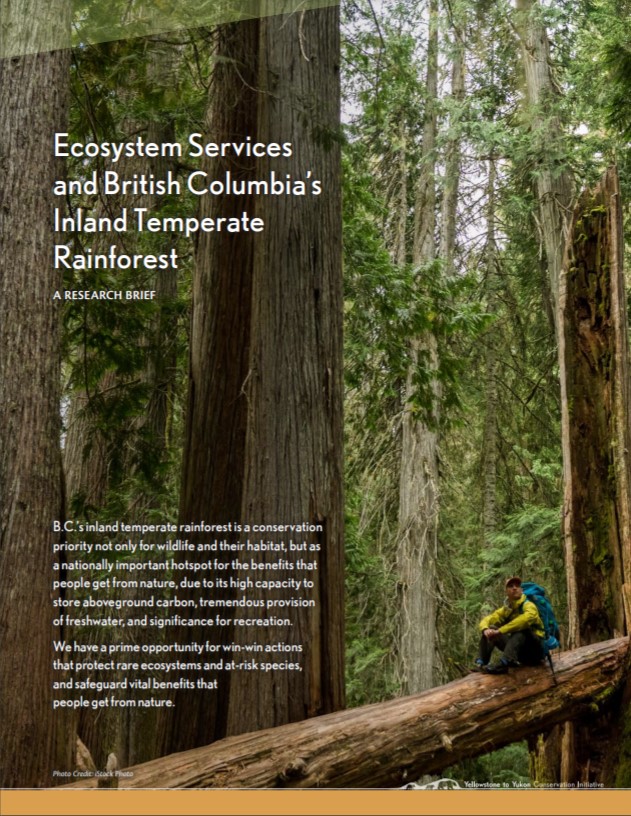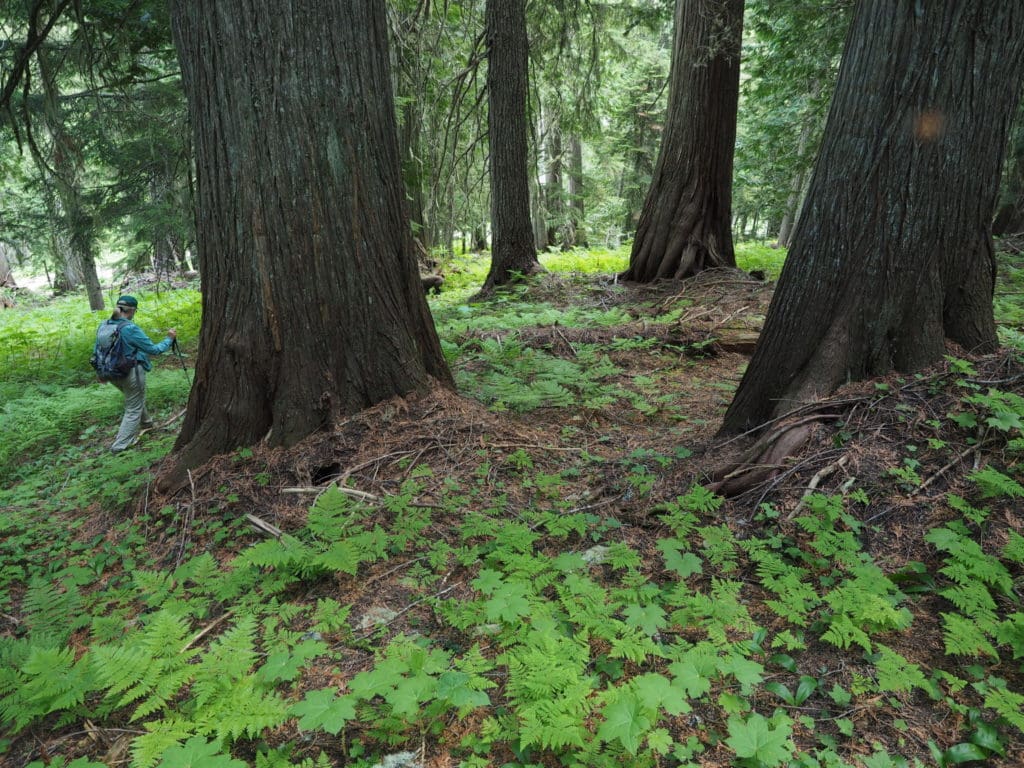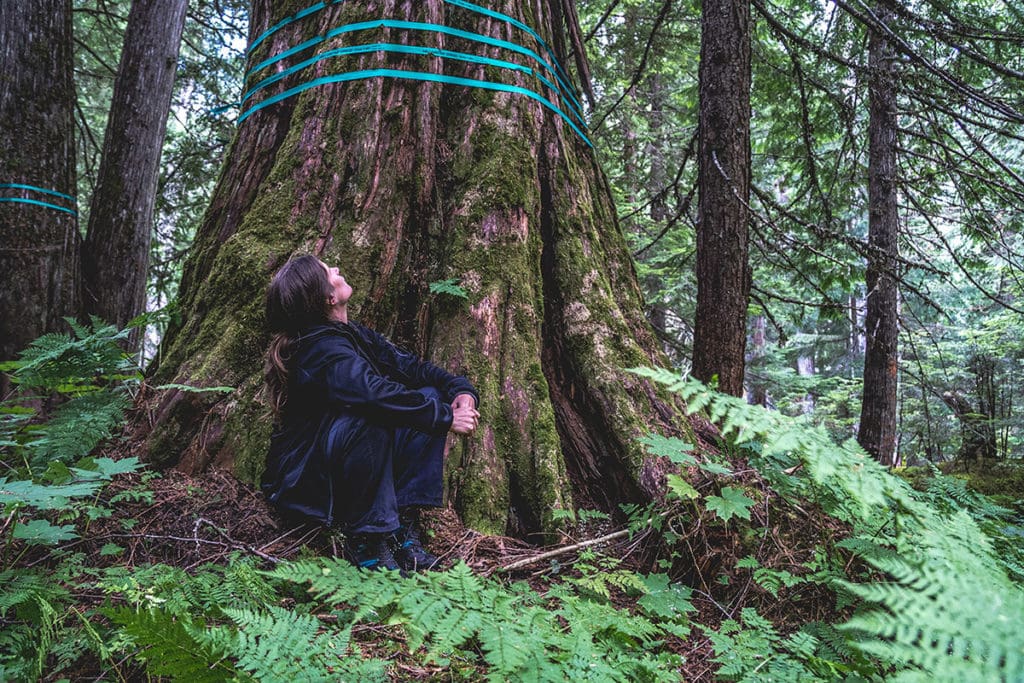New analysis maps three key benefits people get from nature

The water we drink, the crops pollinated by native bees, the air we breathe and the recharge we get from a weekend outdoors are all benefits that people get from nature.
An analysis by Dr. Matthew Mitchell from the University of British Columbia maps out hotspots in B.C., based on recent nationwide research with scientists from the universities of Carleton and McGill, Y2Y and Wildlife Conservation Society Canada.
Three key benefits people get from nature were mapped:
- Climate regulation (i.e., carbon storage);
- Freshwater (e.g., for drinking, irrigation, hydroelectricity);
- Nature-based outdoor recreation.
Importantly, the methods included both nature’s capacity to supply these benefits, as well as human demand for them.
One of the places in B.C. that stands out as a conservation priority for all three is the inland temperate rainforest. This globally unique ecosystem stretches from the Idaho-B.C. border to Prince George.
The analysis shows that the inland temperate rainforest is a nationally important hotspot due to its high capacity to store aboveground carbon, tremendous provision of freshwater to downstream communities, and significance for recreation.
It is also an area of high biodiversity that is under high pressure from past and planned human activities, including logging, roadbuilding, and recreation and tourism.
“The inland temperate rainforest has long been known for its ecological importance, including its huge trees and habitat for rare wildlife like mountain caribou,” says Nadine Raynolds of Y2Y. “But it is also clear that this region is incredibly important for people, especially as we face the predictions of climate change.”

Given Canada’s commitment to protecting 30 per cent of the country by 2030, research like this is key as all governments design conservation plans that ensure both people and nature thrive. Choosing places that have multiple benefits helps increase and diversify the impact of conservation.
The inland temperate rainforest has the highest density of overlapping carbon and freshwater provision hotspots in B.C. compared to all other biogeoclimatic zones. It is just under five per cent of the province by area, but has almost 30 per cent of the overlapping aboveground carbon-freshwater provision hotspots and 20 per cent of the overlapping total carbon-freshwater provision hotspots in B.C.
Similarly, the Upper Columbia basin, a subregion of the inland temperate rainforest, covers just four per cent of the province but contains over forty percent of overlapping freshwater capacity and provision hotspots — and this does not include all the freshwater demand downstream in the U.S.
“At the same time that biodiversity is increasingly under threat in Canada and B.C., Canadians are demanding more of the benefits that natural areas provide. Identifying those places that are important for multiple benefits and species, like the inland temperate rainforest and Upper Columbia basin, is critical as we work to improve and expand our conservation actions,” says Dr. Matthew Mitchell, lead author.
“As we grapple with major decisions regarding conserving and protecting nature, we need every tool we can get to make the most effective and well-informed decisions,” says Raynolds.
“The province has committed to protecting old growth forests and recovering mountain caribou, which are under serious threat in B.C.’s inland temperate rainforest. We have a prime opportunity to protect these rare and at-risk ecosystems and secure critical needs and benefits for people. A win-win.”


